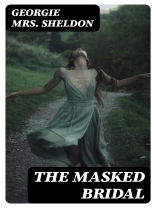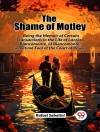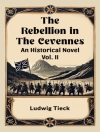Georgie Mrs. Sheldon’s novel, ‘The Masked Bridal, ‘ is set in the Victorian era and follows the story of a young woman who must navigate the intricacies of high society while concealing her true identity behind a mask. The novel combines elements of romance, mystery, and societal commentary, with a focus on the restrictions placed on women during that time period. Sheldon’s writing style is eloquent and evocative, transporting readers back to a time of lavish balls and hidden desires. The use of the masked bridal motif adds an air of secrecy and intrigue to the narrative, keeping readers guessing until the very end. Georgie Mrs. Sheldon was a prominent Victorian author known for her keen observations of societal norms and roles. It is likely that her own experiences in navigating the expectations placed on women in that era informed her writing of ‘The Masked Bridal.’ Through this novel, Sheldon delves into the complexities of gender, identity, and love, shedding light on the hidden desires and constraints faced by women of her time. I highly recommend ‘The Masked Bridal’ to readers interested in Victorian literature, romance, and societal critique. Sheldon’s masterful storytelling and poignant themes make this novel a captivating and thought-provoking read that will linger in the minds of readers long after they have finished it.
Over de auteur
Georgie Mrs. Sheldon, a nom-de-plume for Sarah Elizabeth Forbush Downs (1843-1926), was an eminent author in the late nineteenth and early twentieth centuries. Her work, mainly categorized under popular domestic fiction and women’s literature, reflects the tastes and societal norms of the period, yet often contains elements of independence and resilience among her female protagonists. Sheldon’s novels, including the well-known ‘The Masked Bridal’, were serialized in dime novels and story papers, a testament to their widespread appeal and commercial success during the heyday of sensational and romantic fiction. ‘The Masked Bridal’ is an illustrative example of Sheldon’s narrative style, where the intertwining of romance and mystery propels the story forward and ensures the engagement of her audience. While her literary style may not have garnered serious literary acclaim from critics who often dismissed women’s popular fiction as trivial, Sheldon’s work has been recognized for its contribution to the genre and its insight into the challenges and aspirations of women during the era in which she wrote. Sheldon’s stories were instrumental in the development of early popular American fiction and remain of interest to scholars examining the intersection of gender, literature, and culture.












